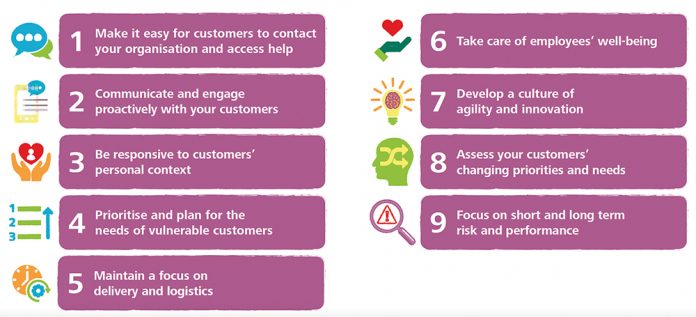Twice a year, we publish the nation’s barometer of service satisfaction – the UK Customer Satisfaction Index. It is the most in-depth cross-sector measurement of customer service in the UK, with 10,000 consumers rating 45,000 service experiences across over 25 different metrics.
Customer satisfaction across all sectors of the UK economy has been declining for the past three years. Whist the utilities sector has bucked this trend in the last two years – rising 0.7 points to 72.7 (out of 100) in our UK Customer Satisfaction Index – it is still 4.1 points below the all-sector average (see fig.1). It also lags behind every other sector apart from Transport.
Satisfaction levels remain static year-on-year for water providers, with energy providers slightly behind, but at least showing some positive movement over the past 12 months (see fig.2).
The number of customers experiencing a problem has increased in the Water sector from 11.4% to 13.2%. The leading causes of customers’ issues with utility providers are cost (cited in 24% of problems), quality or reliability of goods/services (21.2%) and an organisation failing to keep its promises or commitments (19.8%). Compared to the UK all-sector average, more customers experienced problems related to cost, but fewer problems were concerned with the quality and reliability of goods/services.
There is thankfully encouraging news in some quarters. 75.5% of customers rated their experience as right first time, 1.6 percentage points higher than in January 2020 (albeit 5 percentage points below the UK all-sector average).
Scottish Water is the UK’s highest-rated water company, followed by Dwr Cymru (Welsh Water), Severn Trent, Anglian and Yorkshire. Severn Trent Water is the most improved utility provider over the last year, up 4.3 points in our index to 78.3. Water companies also tend to handle complaints far more effectively than energy providers.
Across the utilities sector, satisfaction levels with customers interacting via website and email – both of which have become more popular channels through the crisis – were up. However, 54.3% of complaints take longer to resolve than expected and the effectiveness of over-the-phone support, in particular, has fallen sharply.
Overall, this paints a disappointing picture. When we look across the five Customer Satisfaction Dimensions we measure (see fig.3), we can see there is no single area in which the utilities sector is anywhere near the all-sector average. It is clear there is much work to be done.
So, what practically can water companies do? Many water companies are members of The Institute and we help them focus on their purpose, relevance and impact. We collect and analyse data from our members’ customers and colleagues to identify areas of strength and highlight where best to allocate investment for the best returns.
Our UKCSI research identified nine recommendations and key actions for organisations to improve their customer service and respond to changing customer needs and behaviours. These are listed in (fig. 4), and we expand on each one in our UKCSI main report which you can download for free on our website.
There is no doubt we are navigating one of the most challenging periods in our living history. As the UK continues to feel the devastating impact of the coronavirus crisis, maintaining excellent service levels will be vital to helping the nation’ build back better’.
The polarising impact of the pandemic is evident. As the gaps in our society grow ever wider, water companies need to take the time to understand who they serve – and how they serve them. Those that focus on customer service moving forward will be in the strongest position to prosper long into the future.




